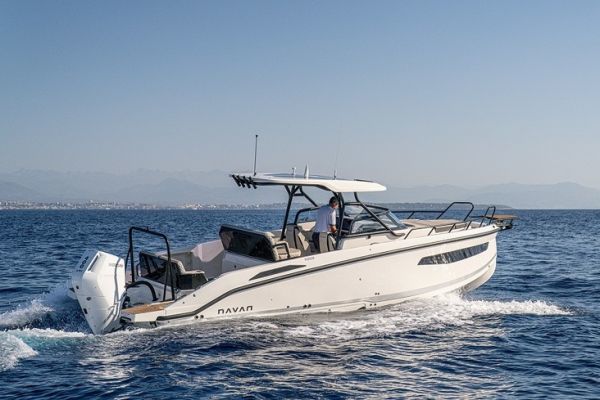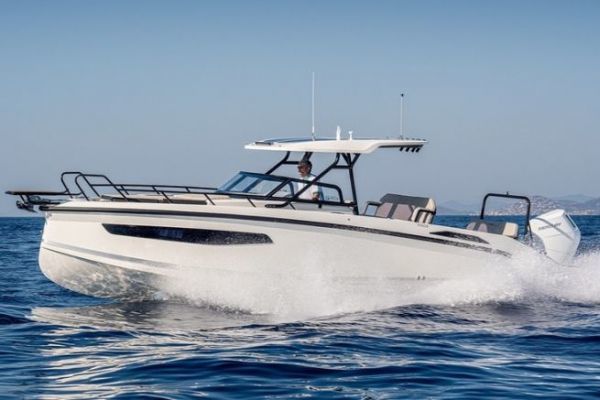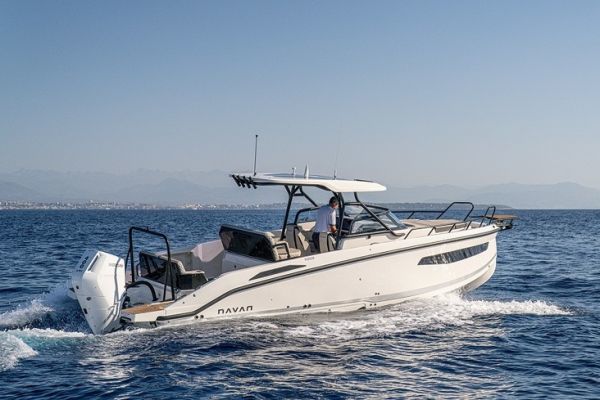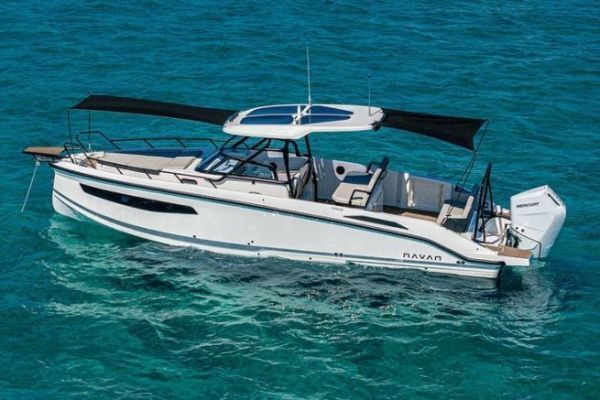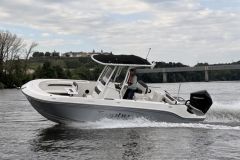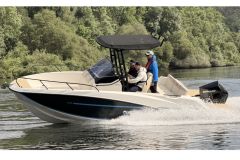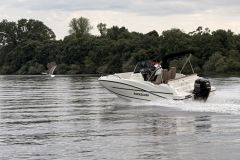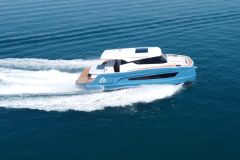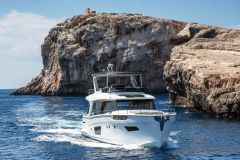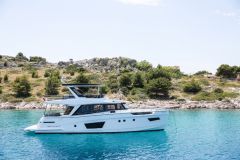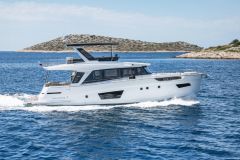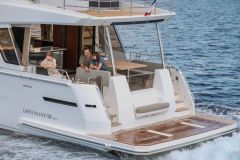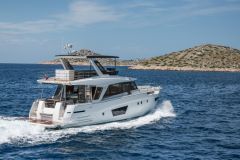An outing in Mediterranean conditions
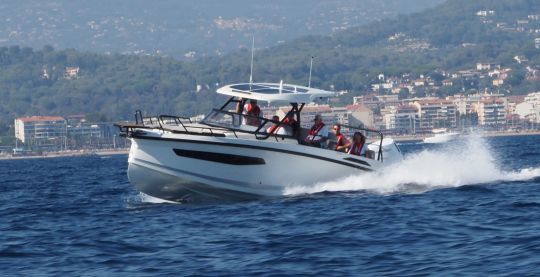
Our test run took place in the Bay of Cannes, starting from the port of Mandelieu La Napoule. An easterly flow of around 15 knots was blowing across the water, which was bustling with traffic on the eve of the Cannes Yachting Festival.
A small cross-chap cohabits with the agitation of the wakes of the many boats on the water. These messy conditions are ideal for testing this step hull.
We set off with the fuel tank one-third full, i.e. around 150 liters, but with 7 passengers on board. Our Navan S30 is powered by a Mercury V10 developing 400 hp, with a maximum single-engine output of 450 hp, or 600 hp with twin engines.
A protected cockpit
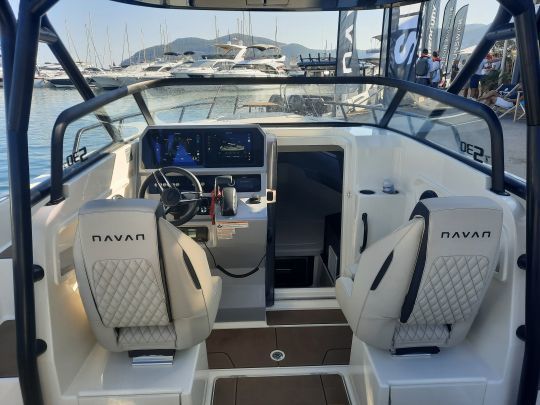
The cockpit floor is lower than other living areas. As a result, it offers excellent protection, enhanced by an effective windscreen topped by a handrail.
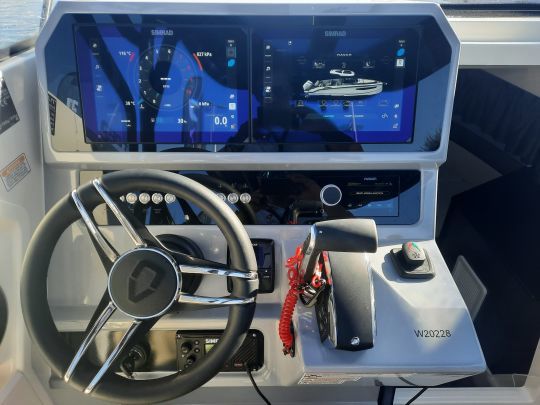
The helm station is on the port side, with a passenger seat on the opposite side. The pilot has the choice of standing or sitting in the bucket seat. The dashboard is impressive, with easy-to-read displays. The throttle position, however, is a little awkward and lacks ergonomics.
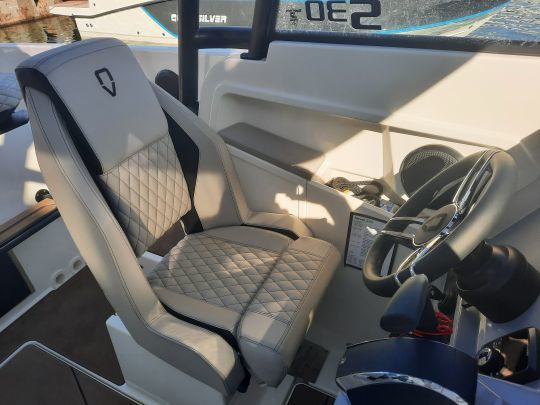
Excellent behavior
With a fairly heavy boat, we reached a top speed of 41 knots. Lift-off is short, in less than 5 seconds. We set our cruising speed at 24 knots, for an engine speed of 4,000 rpm, and an hourly consumption of 45 liters.
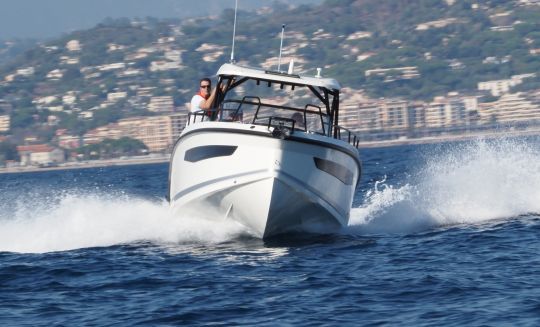
The hull fulfills its role and offers excellent grip in turns. The steps are efficient and provide a fairly airy ride. Even when we put the Navan S30 through its paces, we didn't fault its behavior, although we did inflict some discomfort on the crew.
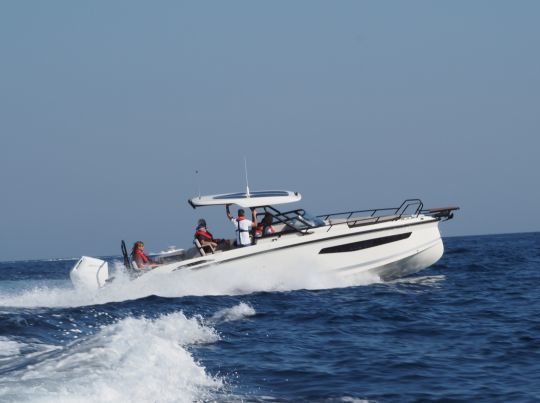
Steering is light and responsive, and the pilot is able to place the boat wherever he likes. As the hull is rather narrow, the heel is a little pronounced in tight turns, but without surprising passengers.
Our 400-hp Mercury represents a fine synthesis, delivering quite respectable performance, with lower fuel consumption and lower costs than a twin-engined engine. On the other hand, it was mounted a little high, which caused ventilation in certain curves. For owners who prefer a sporty program, the twin 300 hp engine is also available. The value of the single-engine 450 hp model remains debatable, given the excellent performance already offered by the 400 hp unit.
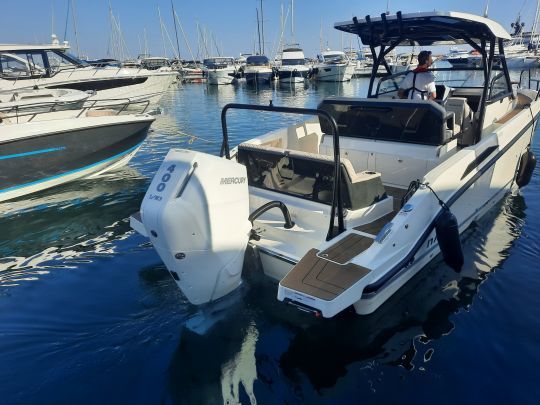

 /
/ 